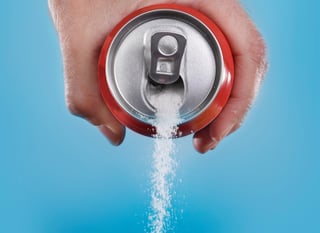 Your company produces a delicious, refreshing product that you know consumers can’t wait to drink -- and buy. Even after you’ve perfected the product itself, its packaging, and decided how to market it, you might still run into trouble actually getting it into the hands of consumers. Here are three beverage distribution strategies that young brands can use to gain traction before before breaking into the larger retail landscape.
Your company produces a delicious, refreshing product that you know consumers can’t wait to drink -- and buy. Even after you’ve perfected the product itself, its packaging, and decided how to market it, you might still run into trouble actually getting it into the hands of consumers. Here are three beverage distribution strategies that young brands can use to gain traction before before breaking into the larger retail landscape.
Vending Machines
It’s no secret that consumers love convenience, hence the widespread presence of vending machines in practically every public space. The omnipresence of vending machines can help beverage startups get noticed by lots of eyes every single day. What’s more, since they operate for 24 hours a day, your product is always available for sale even after stores close (unless the machine is located inside a store, of course). This aspect of vending machines makes them extremely useful for driving up impulse purchases.
Recent shifts in vending machine industry trends present a prime opportunity for health-conscious brands to supply their product through this channel. Amanda Del Buono, associate editor of Beverage Industry, reports that modern consumers are less interested in purchasing carbonated, sugary drinks and instead are opting for lighter options. As a result of this change in preference combined with increased pressure from the government to supply healthier choices, vending machine companies are scrambling to find qualified suppliers that meet this demand. Hence, young functional and healthy beverage brands should consider utilizing vending machines as a lucrative distribution channel.
Convenience Stores
With over 154,000 of them in the United States alone, convenience stores provide an ideal platform for beverage brands to showcase their products. Like vending machines, convenience stores allow your brand to be seen by a vast number of individuals due to the sheer volume of people who flood through them everyday. Many stay open for longer hours than traditional retail stores as well, which means there is more time in the day for your product to be sold and for last-minute purchases to be made.
Convenience stores are especially advantageous for beverage companies since they are the most common place for consumers to purchase a single-serve drink. In fact, a study conducted by VideoMining Corp. found that consumers are spending 5% less time in supermarkets and 6% more time in convenience stores making the latter that much more attractive for beverage suppliers. The study also drew a correlation between time spent in the store and average dollar basket size, which grew by 9%. These favorable market conditions make supplying to convenience stores a key strategy for a beverage distribution business plan.
Food Service Establishments
When focusing on distribution at restaurants and bars, younger brands should attempt to make strides in their local communities. “Farm-to-table” type of establishments often seek out locally-produced ingredients and products to serve at their businesses, thus presenting a great channel opportunity for your beverage company. Many cocktail bars want to “wow” their customers with seasonal offerings featuring the latest and greatest beverage flavors. Promoting your product as something that’s “on-the-rise” or part of the “hottest” trend can help you gain prominence in the local marketplace. If you're haven't already, establish a presence at your community's farmer's market. Venues like these are often where small businesses turn when looking for local products to supply at their establishments.
Regardless of which channel(s) you use to bring your product to market, it’s critical to capture data about how your brand is performing. Doing so not only enables your company make insightful business decisions, but it affords a record of your product’s past success that can be presented to larger retailers during negotiations. Consider using a beverage distribution software to document information such as number of units sold, shelf placement, client requests and more.



.png?width=480&height=252&name=PRESS%20RELEASE-2%20(4).png)

